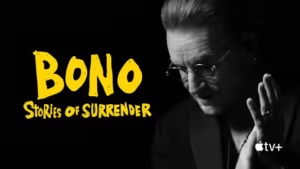
One of Them Days (R) – Complete Review – Zvideo
The phrase “One of Them Days” often resonates deeply with people from all walks of life. It captures a universal experience — the kind of day when everything seems off, challenges pile up, and nothing goes as planned. Add the (R) rating to it, and the phrase takes on a new intensity. This combination could represent a film, a creative expression, or an artistic work infused with rawness, mature themes, or unfiltered emotional content.
This article aims to provide a comprehensive 3,000-word exploration of One of Them Days (R) — not as a specific movie but as a cultural concept, creative motif, and thematic exploration in storytelling. We will dive into the origins of the phrase, its emotional significance, usage in media, potential narrative structures, and its psychological and societal implications when coupled with an “R” rating.
Understanding the Phrase: “One of Them Days”
Origin and Common Usage
The phrase “One of Them Days” is a colloquial expression commonly used to describe a particularly difficult or unpleasant day. It usually implies a sense of inevitability and exasperation. Often, it’s said with a sigh, a shake of the head, or a grimace, as in:
“It’s just been one of them days…”
While grammatically nonstandard (compared to “one of those days”), the wording adds to its authenticity and emotional tone. It suggests an informal, relatable, and raw sentiment — something felt, not scripted.
Cultural Resonance
In various communities, especially within urban and working-class environments, the phrase encapsulates a feeling of fatigue, frustration, or emotional overload. It doesn’t necessarily denote catastrophe but rather a piling up of small aggravations — late buses, spilled coffee, arguments, bad news — that collectively push someone to their limit.
The “R” Rating: Rawness, Realism, and Restriction
What Does an “R” Rating Imply?
In cinematic terms, an R (Restricted) rating typically signifies that the content is suitable for mature audiences only. This could include:
- Strong language
- Intense or graphic violence
- Sexual content
- Drug use
- Mature themes such as mental illness, death, or abuse
When applied to the title One of Them Days (R), the implication is clear: this isn’t just a bad day — it’s a brutally honest, possibly disturbing, and deeply emotional experience.
R-Rated Emotional Realism
By aligning with the R rating, creators can push past the sanitized or simplified versions of “bad days” seen in family or teen dramas. They can dive into the gritty reality — panic attacks, suicidal thoughts, addiction, domestic violence, and more — exploring themes that require emotional maturity and sensitivity.
Themes in “One of Them Days (R)” Storytelling
Mental Health and Emotional Collapse
At its core, an “R-rated bad day” often involves psychological unraveling. Themes could include:
- Depression: The protagonist might experience a depressive episode that affects every aspect of their day.
- Anxiety: A racing mind, fear of social interaction, or a panic attack can dominate the narrative.
- Burnout: The physical and emotional toll of unrelenting stress culminates in a breaking point.
Violence and Personal Conflict
Whether metaphorical or literal, violence can be a part of such stories:
- Domestic altercations
- Police brutality
- Street violence
- Self-harm or suicide attempts
This portrayal isn’t for shock value; rather, it gives voice to people whose reality includes violence as a daily possibility.
Addiction and Escapism
A character might cope with their terrible day through substance abuse:
- Alcoholism
- Drug use
- Reckless behavior
This theme often intersects with trauma and poverty and can provide a harsh but important commentary on cycles of suffering.
Loss and Grief
A story might center on the death of a loved one, the end of a relationship, or the loss of a job. These events are often catalysts for “one of them days” — when life takes a turn and the aftermath is overwhelming.
Narrative Structure of “One of Them Days (R)”
Nonlinear Timeline
The chaotic emotional state of the protagonist might be mirrored by a nonlinear narrative:
- Flashbacks to traumatic events
- Sudden cuts between emotional highs and lows
- Dream sequences or hallucinations
This storytelling technique allows creators to explore how the mind replays trauma or distorts reality under stress.
Single-Day Format
Much like movies such as Training Day or Uncut Gems, a story might unfold over the course of a single day. This format builds intensity, allowing small events to snowball into a climactic moment.
First-Person Perspective
Using a first-person point of view — either in film, literature, or graphic novels — intensifies the emotional impact. The audience becomes intimately familiar with the protagonist’s thoughts, often uncomfortable or disturbing.
Character Archetypes in “One of Them Days (R)”
The Anti-Hero
This character may not be likable or moral, but they are deeply human. They often:
- Make poor choices under pressure
- Hurt others as a defense mechanism
- Struggle with guilt or shame
The Bystander
Someone who witnesses the protagonist’s unraveling but cannot or does not intervene. They may symbolize society’s apathy or powerlessness.
The Catalyst
This character — a boss, lover, stranger — might ignite the downward spiral with a single action, like firing the protagonist or revealing a betrayal.
Visual and Auditory Style (For Film or Animation)
Cinematography
- Gritty Realism: Handheld cameras, natural lighting, and desaturated colors emphasize rawness.
- Claustrophobic Framing: Tight shots enhance a sense of entrapment.
- Visual Metaphors: Cracks in walls, broken glass, and storms often reflect the inner turmoil.
Sound Design
- Discordant Music: Jazz, industrial sounds, or lo-fi elements underscore emotional instability.
- Diegetic Silence: In key moments, all background noise may cut out, focusing attention on internal struggle.
Examples in Media That Mirror “One of Them Days (R)”
Film
- “Requiem for a Dream” — A descent into addiction told with brutal honesty.
- “Falling Down” — A man snaps during a seemingly normal day.
- “Uncut Gems” — A high-stress single-day narrative with constant escalation.
Music
- Monica’s “Just One of Them Days” — Though more subdued, the song expresses emotional overwhelm.
- Eminem’s “Stan” — A dark narrative told through letters, revealing spiraling mental illness and obsession.
Literature
- “The Bell Jar” by Sylvia Plath — A first-person account of depression.
- “Fight Club” by Chuck Palahniuk — Explores disconnection and self-destruction.
Psychological and Sociological Dimensions
Why Do We Relate to Bad-Day Narratives?
- Catharsis: Seeing someone else fall apart helps us process our own stress.
- Validation: These stories remind us we’re not alone in feeling overwhelmed.
- Empathy: They humanize people whose lives might otherwise be misunderstood.
The Role of Trauma and Poverty
“One of them days” for a wealthy person might be inconvenient — for someone in poverty, it can be life-threatening. R-rated stories often reflect this disparity by showing:
- Unstable housing
- Hunger and lack of healthcare
- Dangerous jobs or abusive relationships
Creative Uses Across Media Formats
Graphic Novels
Illustrators can use stylistic shifts — from sharp, jagged panels to chaotic coloring — to express a spiraling mindset.
Stage Plays
Minimalist sets and raw monologues can bring emotional intensity to the forefront.
Video Games
Narrative-driven games can simulate a bad day through escalating gameplay difficulty, ethical dilemmas, or time limits.
Audience Reactions and Critical Reception
Divided Opinions
Some may find One of Them Days (R) cathartic and important. Others may find it too bleak or triggering. Critically, it may be praised for authenticity but also questioned for its potential to glorify despair.
Trigger Warnings and Content Sensitivity
Creators must balance realism with responsibility. Including content warnings and offering resources (e.g., mental health hotlines) can be a way to care for vulnerable audiences.
Conclusion: The Power of Raw Storytelling
One of Them Days (R) is not just a title — it’s a framework for storytelling that embraces the messiness of the human condition. These narratives aren’t always easy to watch or read, but they serve an essential function in media: they tell the truth. Not every day is sunshine and resolution. Some days are brutal, and those deserve to be seen too.
By coupling the phrase with an R rating, creators grant themselves the permission to be honest, complex, and, most importantly, real. These stories — when told with nuance and respect — have the potential to create empathy, understanding, and a much-needed conversation around mental health, trauma, and the emotional turbulence that so many endure in silence.







